World Travel Awards Winner
Endorsed by ASTA
In Alliance with Regenera
Rated Excellent by Tripadvisor
Puerto Maldonado is a Peruvian colonist town, that borders Brazil, and with strong links to the Cusco region and fervor for bubbly jungle chicha music. With an economy based on lumber and gold extraction, and highly sustainable Brazil-nut gathering from the forests of Madre de Dios. Without mentioning its ecotourism.
While the busy city center combines the usual bars and restaurants with pool halls, and offices, there isn’t much in the way of specific attractions, and most visitors come here primarily to hire tours, and begin to enter the Amazon forest.
Inside the Amazon forest, the visitors will find eco-lodges, bungalows, and eco-resorts. All these have infrastructure in harmony with the surrounding nature, causing the least possible impact on the Amazonian ecosystem.
Moreover, these lodges not only offer comfortable stays in the middle of the jungle but also different activities. These can be exotic bird watching, night walks along the banks of the Amazon River in search of animals and insects, and boat trips on pristine lagoons and the Amazon River itself.
A separate note is the sports you can practice there, such as swimming, snorkeling, swimming with the mysterious pink dolphins, and sport fishing for piranhas. You can also experience experiential tourism by visiting unique native communities, who are willing to share their way of life and customs. Of course, all these activities will be supported by experienced tour guides and biologists from the same lodges.
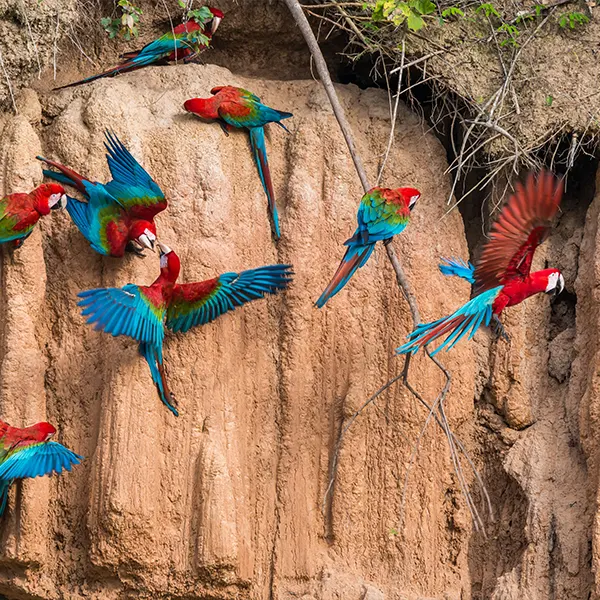
9 Days / 8 Nights
Lima, Cusco, Sacred Valley, Machu Picchu, Puerto Maldonado, Tambopata
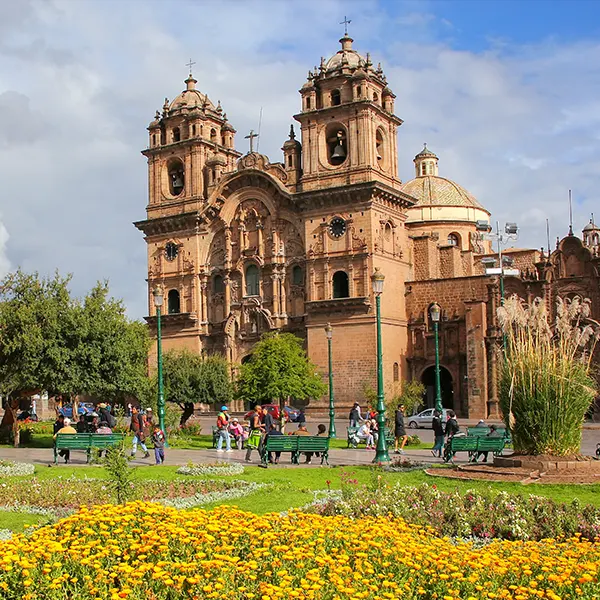
11 days / 10 nights
Lima, Puerto Maldonado, Cusco, Sacred Valley, Machu Picchu, Puno, Lake Titicaca
While gold mining and logging - both mostly illegal frontier businesses - keep Puerto Maldonado buzzing today, it was rubber that established the town at the beginning of the twentieth century. During the 1920s, game hunters dominated the economy of the region, and after diem, mainly in the 1960s, the exploiters of mahogany and cedar trees arrived - leading to the construction of Boca Manu airstrip, just before the oil companies moved in during the 1970s. Most of the townspeople, riding coolly around on Honda motorbikes, are second-generation colonos, but there´s a constant stream of new and hopeful arrivals, both rich and poor, from all parts of South America. The lure, inevitably, is gold.
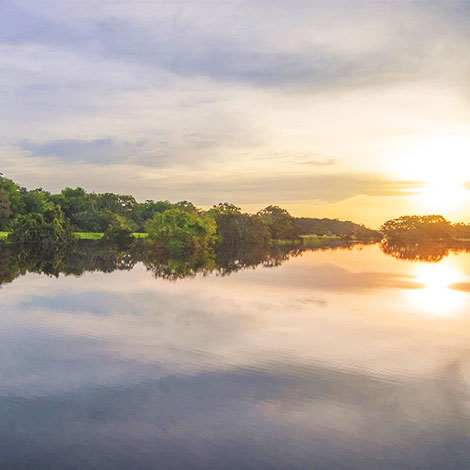
The Amazon rainforest drapes a tropical green blanket over a significant part of South America. It covers the entire eastern part of Peru (about 60 percent of the country’s national territory) and extends into parts of Brazil, Ecuador, Bolivia, Colombia, and Venezuela.
In southern Peru is the department of Madre de Dios, the capital, Puerto Maldonado is the most popular city in the region and a hot spot for adventure seeking travelers that wish to explore this part of the amazon.
The flourishing ecosystem in the southern part of the Peruvian jungle is all fed buy the Madre de Dios River and its streams. The Tambotapa is one of the most vital streams, starting in the town of Puerto Maldonado around 55km from the Peru-Bolivia border. The stream also flows through the Tambopata National Reserve and the Bahuaja-Sonene National Park. The protected areas of the jungle hold large habitats where flora and fauna flourishes, with ancient trees that spread for miles and riverbeds layered with bamboo groves.
With an altitude of 180m (600f) above sea level, Puerto Maldonado dominates the southern part of the Peruvian Amazon.
With a tropical climate, the Amazon will have warm days with high humidity.
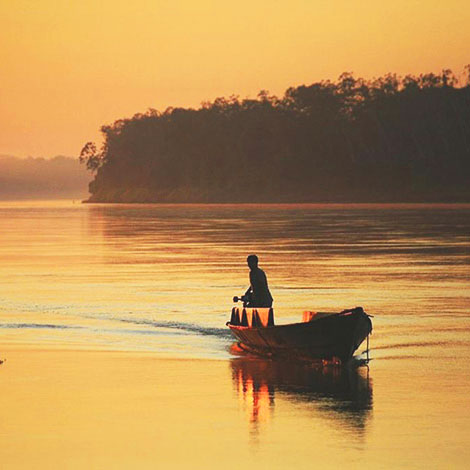
The driest months in the Amazon are from May to October. Friajes are cold spells that occur from June to September, temperatures can drop to around 10*C (50*f) for a few days at a time. These are a result of cold fronts that emerge from Patagonia and from the Andes, and blow down to the southern jungle.
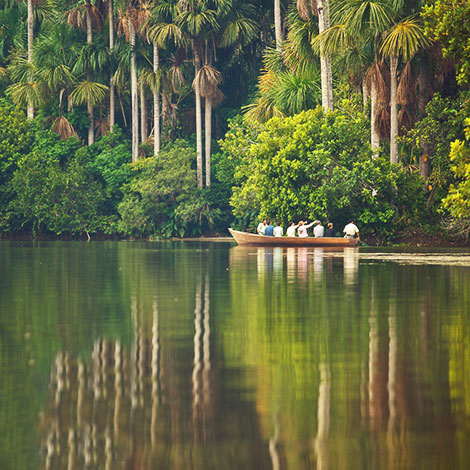
You can expect rain throughout the whole year due to the fact that the Amazon is rainforest, but during “wet season”, rainfall will be more consistent. The rainy season starts in November and will continue on until April. November and December are when most rainfall is expected.
Madre de Dios boasts spectacular Virgin lowland rainforest and exceptional wildlife. Brazil-nut tree trails, a range of lodges, some excellent local guides and ecologists, plus indigenous and colonist cultures are all within a few hours of Puerto Maldonado. Serious jungle trips can be made here with relative ease and without too much expense, and this part of the Amazon offers easy and uniquely rewarding access to rainforest that is much less disturbed than that around Iquitos, for example.
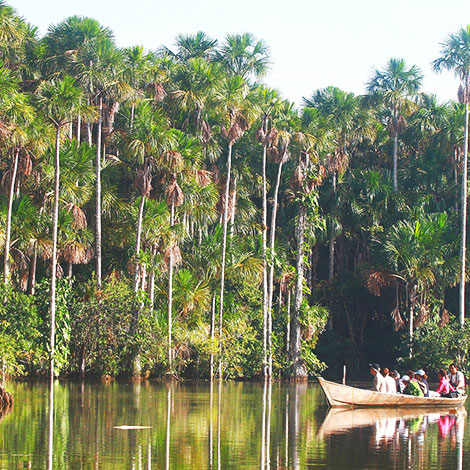
A short way downriver from Puerto Maldonado is Lago Sandoval, a large lake where the Ministry of Agriculture have introduced the large paiche fish. You can walk here from the drop-off point on the Río Madre de Dios. On arrival at the lake, boatmen and canoes can usually be obtained by your guide for a couple of hours, as can food and drink. At its best on weekday mornings (it gets quite crowded at other times), the lake offers decent opportunities for spotting wildlife, in particular birds similar to those at Lago Valencia, such as hoatzins and the occasional toucan. You may even spot a giant otter. Incidentally, if you're travelling to the lake by river, most guides will show you the mined hulk of an old boat lying close to the riverbank. If they claim it had anything to do with Fitzcarrald´s, don't believe them; it may be similar in style to Fitzcartald's, but in fact it's smaller and is a far more recent arrival - it's a hospital boat that was in use until two or three decades ago.
Travelling by boat from Puerto Maldonado to the huge lake of Lago Valencia, you can stop off to watch some gold- panners on the Río Madre de Dios and visit a small settlement of Ese Eja; about thirty minutes beyond, you turn off the main river into a narrow channel that connects with the lake.
Easing onto the lake itself, the sounds of the canoe engine are totally silenced by the weight and expanse of water. Towards sunset it's quite common to see caimans basking on the muddy banks, an occasional puma or the largest rodent in the world, a capybara, scuttling away into the forest. Up in the trees around the channel lie hundreds of hoatzin birds, or gallos as they are called locally - large, ungainly creatures with orange and brown plumage, long wings and distinctive spiky crests. The strangest feature of the hoatzin is the claws at the end of their wings, which they use to help them climb up into overhanging branches beside rivers and lakes; they have almost lost the power of flight.
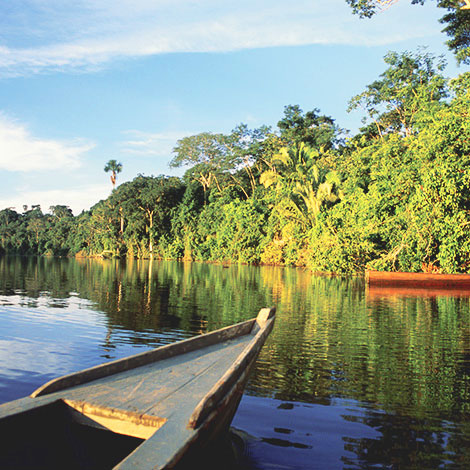
An easy walk (20min) from the main Río Madre de Dios river bank brings you to the lake's one real settlement, a cluster of thatched huts around a slightly larger schoolhouse. Fewer than seventy people live here - a schoolteacher, a lay priest, the shop owner and a few fishing families. Some tour groups stay in a small camp further down, a seasonal nut-collectors campamento, comprising just one cooking hut with an adjacent sleeping platform, though there is also a lodge and a hospedaje. By day most people go for a walk in the forest - something that's safer and more interesting with a guide, though whichever way you do it you'll immediately sense the energy and abundance of life. Quinine trees tower above all the trails, surpassed only by the Tahuari hardwoods. Around their trunks you'll often see pega-pega, a parasitic, ivy-like plant that the "shamans mix with ayahuasca into an intense aphrodisiac. Perhaps more useful are the liana vines; one thin species dangling above the paths can be used to take away the pain from a shushupe snake bite. Another, the maravilla or palo de agua, issues a cool stream of fresh water if you chop a section, about half a metre long, and put it to your lips. You may come upon another vine, too - the sinister matapalo (or renaco), sucking the sap from up to a square kilometre of jungle.
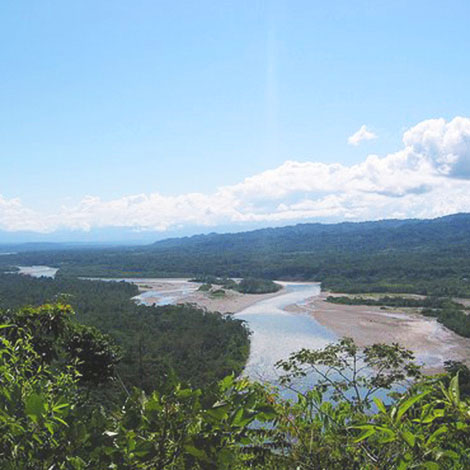
Less than 2hr from Lago Valencia in a motorized lancha.
A good trip deeper into the forest from Lago Valencia is up to the Río Heath, a national rainforest sanctuary, though while the Pampas del Heath are excellent for watching macaws, they don't have the primary forest necessary for a great variety of wildlife. It now lies within the Parque Nacional Bahuaja-Sonene, and special permission is needed from the government protected-area agency SERNANP in Lima.
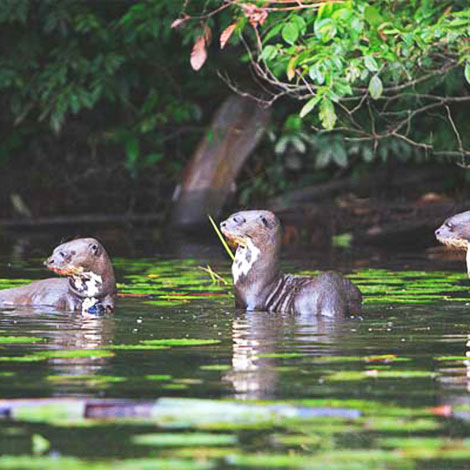
Containing some of the word´s finest and most biodiverse rainforest, the RESERVA NACIONAL TAMBOPATA, is one of the most casily accessible parts of relatively pristine Amazon rainforest. Described by National Geographk as one of the planet's seven "iconic natural sanctuaries", it is within easy reach of many of the lodges in the Puerto Maldonado region. Transformed into a reserved zone mainly due to the scientific work of the adjacent Explorers Inn lodge, the area covers around 250,000 hectares, and ¡s next to the Parque Nacional Batiuaja-Sonene, itself more than 1.5 million hectares. The expansion of the National Parle is a major success for conservation in Peru, but despite this mere are fears that the government has plans to open up the park in future to gas and oil exploitation. It´s only possible to visit the National Park on a tour with a licensed operator. Tours organized from Cusco or Puerto Maldonado can enter en route to one of the major macaw salt licks (colpas) in the region. The licks are the best places to see wildlife in the jungle, since their sails, minerals and clay are highly nutritious, attracting large numbers of wild birds and animals.
Influenced by both Cusco to the north and Puno to the east, the Colca has historically been inhabited by Quechua and Aymara populations. Its cultural traditions reflect this mixed heritage.
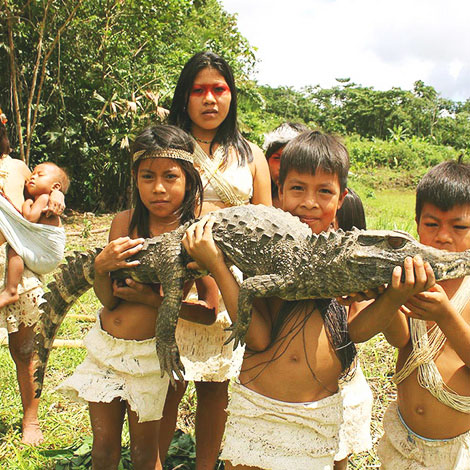
Over 60 percent of Peru is covered by the Amazonian jungle, but only 5 percent of Peru’s total population can call the jungle home. There are several indigenous communities in the Amazon, but each community has very different lifestyles. The people that live closer to bigger cities like Puerto Maldonado, will most likely have electricity and running water, but there are also tribes that live deeper inside the jungle and can only be accessed by boat.
Many of the tribes that once lived in isolated parts of jungle have gone through a lot of hardship and injustice due to the growth of cities like Puerto Maldonado. Environments and habitats have been polluted, because of constant mining and logging. The indigenous community also has to face corrupt politicians and loose businesses that ultimately interferes with monetary aid and environmentally friendly projects that can help these communities.
However, the Ese’Eja tripe is a brilliant example of an indigenous community that thrives in the Madre de Dios region. This tribe has surpassed injustice and is now alongside Rainforest Expedition (a Peruvian ecotourism company), the tribe is also partnered with the Posada Amazonas jungle lodge.
The lodge is currently Managed by Rainforest Expeditions but is owned by the Ese’Eja community. This project produces many job opportunities for locals and earning from the lodge go toward more ecotourism projects.
The Posada Amazonas is also protecting the Ese’Eja culture by teaching the culture and customs with excursions to the tribes.
Over the years, tourism has boomed in Puerto Maldonado, and as result the community has become multilingual. The guides, hotel staff and drivers will of course speak Spanish, and most will also know English. Some may even speak French, Portuguese, etc. to experience native languages a visit to an indigenous community is necessary.
A good way to show appreciation or gratitude to your guides, drivers and hotel staff for making your trip unforgettable is by reflecting it in your tip. At the end of a tour or stay is considered customary to leave a tip, but naturally tipping is at your own preference.
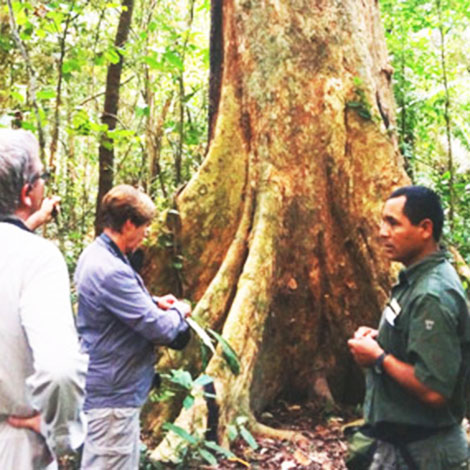
During the low water season, your Amazon tour might include a land trek through the jungle. This is a great opportunity to see hundreds of the species of plants, insects and reptiles that make their home in the vegetation of the jungle floor, under the protection of the thick vegetation above. During the high water season, land treks are uncommon as most areas are inaccessible due to the flooding of the rivers from the heavy rains. It is important to stay close to your guide and remain with your group. Venturing off the beaten path in the Amazon is dangerous and risky.
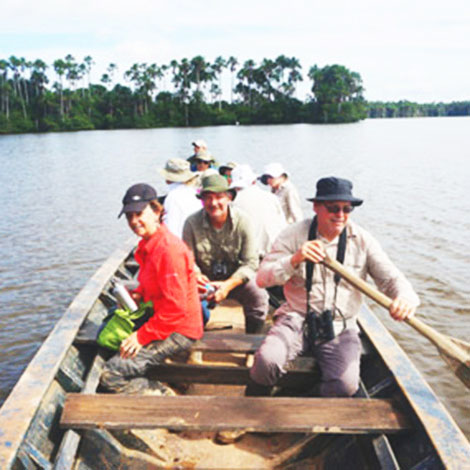
Navigating the rivers of the Amazon by boat is one of the best ways to get a front row seat to the jungle’s wildlife scene. The flowing water of the rivers is the life-sustaining resource of the Amazon Rainforest. This means that a wide variety of animals come to the banks of the rivers to drink, eat, bathe and lounge. It is common to see birds and monkeys perched in the trees, capybaras and otters playing in the shallow water near the shores and possibly even a jaguar taking an afternoon nap in the thicket. Boat tours are available all year round in most parts of the Amazon, but the best time to take a boat tour is during high water season as the rivers and tributaries become wider and more easily accessible.
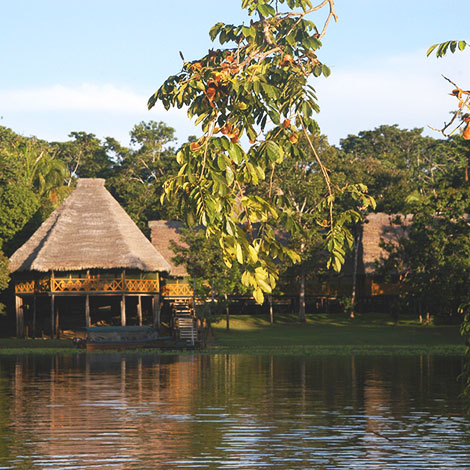
The Peruvian jungle is home to some of the 64 registered aboriginal communities in the country. Despite a long history of interaction with Catholic missionaries and other outsiders, many of these native tribes have kept key elements of their culture intact, including language, dance traditions and artistic expression. Many of these people are being trained to attend to all the tourists who visit them. The service and quality of the lodges are outstanding and indigenous communities try to maintain these international standards.
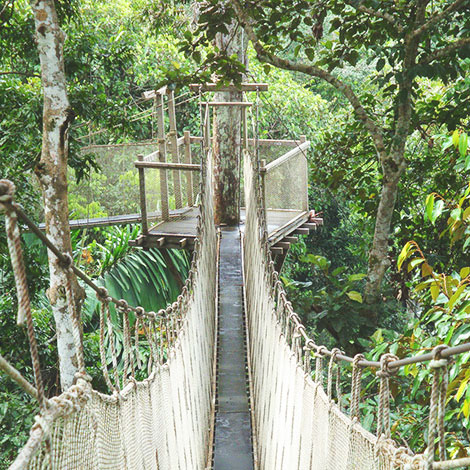
The Peruvian Amazon rainforest is home to some startling diversity of plant and animal life. This diversity varies, not only by geographic location, but also by distance from the rainforest floor. In a competition for sunlight, tall trees mingle their leafy branches with those of their neighbours, creating a green roof known as the canopy. Below, within and above the canopy, life takes different forms. Walks above the canopy (on platforms or bridges) are included in many jungle lodge programs.
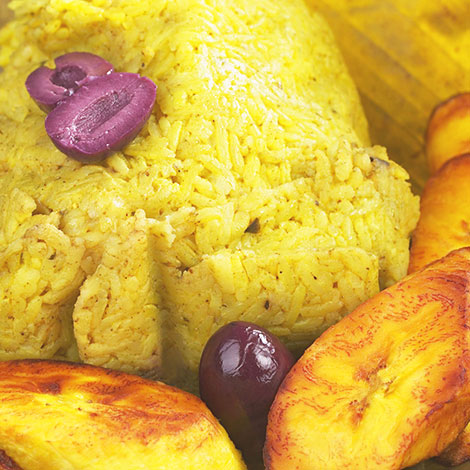
You should have no problem finding something delicious to eat in Puerto Maldonado. Manioc and fish are staple foods in the town´s restaurants. A variety of river fish is always available, even in ceviche form, though there is some concern in the region about river pollution from the unofficial gold mining. Verison (try estofado de venado) and wild boar fresh from the forest are often on the menu toe. Along León de Velarde are a number of cafés and bars, one or two of which have walls covered in typical selvatico-styk paintings, developed to represent and romanticize the dreamlike features of the jungle - looming jaguars, brightly plumed macaws in the treetops and deer drinking water from a still lake.
Puerto Maldonado, a small city nestled in the country’s southeastern region, is one of the principal gateways to the Peruvian Amazon. It is connected to the outside world by air, river and road. If you, like most travellers to Peru, have limited vacation time and you’re looking for the most efficient way to get to your destination, air travel is definitely the fastest way to get to Puerto Maldonado. Flights depart daily from Lima and Cusco. Puerto Maldonado is often used as a place of transit. Most of the jungle lodges are located down the river and away from the city, requiring a second leg of travel by boat. If you’ve made advance arrangement for an Amazon tour, lodge staff will meet you at the Puerto Maldonado’s airport (or bus station) and escort your group to your final destination. Motorised canoes carry passengers along the river and make for a unique jungle experience! Travel time usually takes between one and six hours, depending on the location of the lodge and weather conditions.
The Peruvian Amazon is a year round destination. The “best time” to visit will depend on the individual traveller’s interests. The high water season (December through May) affords greater opportunity to find and see wildlife and the jungle hiking trails disappear due to flooding. Temperatures will be cooler in high water season, but the mosquitos will be out in greater numbers. The low water season brings warmer temperatures, but there are more opportunities to explore the region on foot in order to see the thousands of varieties of flora and fauna inhabiting the lush jungle floor. Keep in mind that some months are better to see wildlife due to mating seasons. For example, many of the parrot species feed more on the clay licks of the Tambopata National Reserve during their breeding season in order to provide nutrients for their young. Therefore, the best time to see this spectacle is between the months of November and March. In short, when you should visit the jungle is a matter of personal preference. No matter when you go, the Peruvian Amazon is guaranteed to be an experience of a lifetime.
Here is a packing list that we recommend for your Amazon jungle vacation:
First of all, we would like to mention that it is not customary to tip in Peru as it is in many other countries. As a consequence, most Peruvians do not show their appreciation for good service by leaving a tip. That doesn't mean you shouldn't tip in Peru. When you are happy with a service, we recommend that you use your judgment to adjust the amount according to the situation.
The Transoceanic Highway cuts a path through the jungle to connect Peru and Brazil. From Puerto Maldonado you can take a bus to the Brazilian or Bolivian borders (around 3 hours).